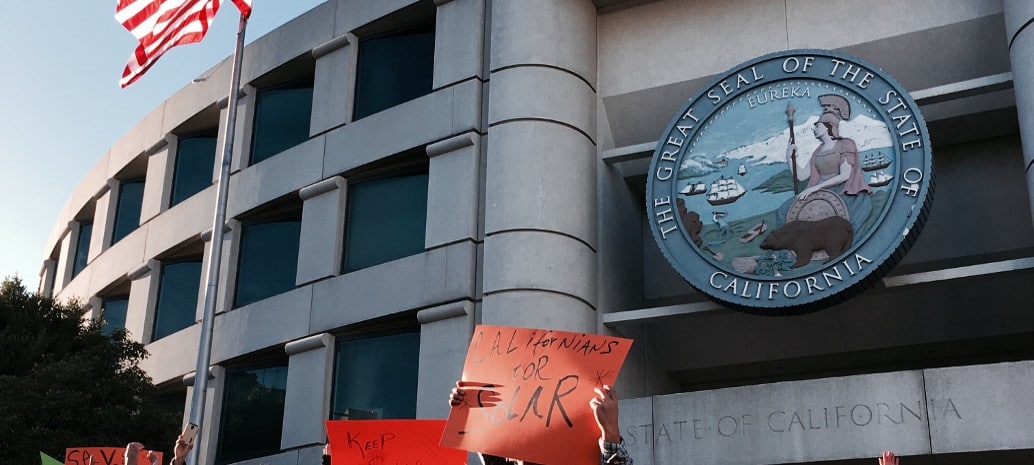California’s distributed solar market is seeing some tough times, and this includes policy challenges. While the state’s implementation of “Net Metering 2.0” set compensation that is still pretty close to retail rates, it has also involved a mandatory move to time of use (TOU) rates for residential customers.
And if utilities lost the net metering program design battle, they are getting much more of what they want in this regard. Because as customers are being moved to these rates, the rates are also being updated to reflect conditions on California’s grid.
In August California Public Utilities Commission (CPUC) approved the first set of new TOU rates for San Diego Gas & Electric Company (SDG&E). In the process they moved the start of the peak period four hours later to 4 PM, over the objections of solar advocates who argued that the data could support a more gradual move to 3 PM.
But even before these new rates were determined, the cut-off date for PV system owners to be grandfathered under old rates passed, meaning that customers installed PV systems without knowing an important factor in calculating the compensation for their electricity.
Yesterday CPUC softened the blow somewhat and extended the grandfathering period for many distributed PV systems in the old rates, by approving an alternative proposal by Commissioner Rechtschaffen that eliminates completion deadlines for qualifying PV systems.
To qualify for grandfathered TOU rates in the service areas of the state’s three main utilities, customers still need to have filed an initial interconnection application on or before January 31 of this year. It will also only apply to residential customers who opted in to a TOU rate before July 31.
Additionally, the grandfathered rates will only last for five years for residential customers and ten years for other customers. There appears to have been pressure to make the deal better for schools that were in the process of getting PV systems and got caught up on the rapid policy change.
Both California Solar Energy Industries Association (CalSEIA) and Solar Energy Industries Association (SEIA) had called for the change. “The Commission has recognized that it takes a long time to develop commercial solar projects and customers need some amount of certainty as they move forward,” CalSEIA Policy Director Brad Heavner told pv magazine.
“Many of the installation delays that customers face are due to factors outside of their control, and this change will allow many customers to follow through on their projects despite those delays.”
However the solar industry is clearly bracing for more battles as utilities Pacific Gas & Electric Company (PG&E) and Southern California Edison (SCE) prepare their TOU rates. “While we continue to believe that utility proposals create peak periods that are too late in the day, and that new rate options are needed to stand up solar-plus-storage, this decision provides much-needed relief for customers caught in the gap between the time of use periods of the past 30 years and the new ones the Commission will be adopting in the coming months,” noted Brandon Smithwood, director of California state affairs for SEIA.
Update: This article was modified at 2:30 PM on October 27 to include CalSEIA comments.
This content is protected by copyright and may not be reused. If you want to cooperate with us and would like to reuse some of our content, please contact: editors@pv-magazine.com.









It’s strange to say that Utilities crest TOU proposals that are too late in the day. The peak load has been shifting later and later. This is not under the control of the utility. And it means that solar is less and less valuable. So- solar distributors should be paid less for their electricity.
We submitted the PG&E NEM application for a customer prior to December 31, 2017. We will start building the project in December 2018, but will not have PTO until Mar. 2019.
When does the 10-years of Grandfathering of the current TOU structure start? 1) at the Dec 2017 NEM submission, 2) at the end of 2018, 3) at PTO in 2019? , 4) at the beginning of 2020 when the new TOU structure begins for everyone else, 5) some other date????
thanks,
Jeannie
I believe it is unfair for solar customers to be forced to a TOU plan, when non solar customers are not forced to these same plans. Solar customers should not have any disadvantages over non solar customers in my opinion.
How many non-solar customers have opted to switch to a TOU plan? I believe the answer will be very few. This is because the TOU plans are not as good as the Tiered plans. This means solar customers are forced to a worse billing plan.